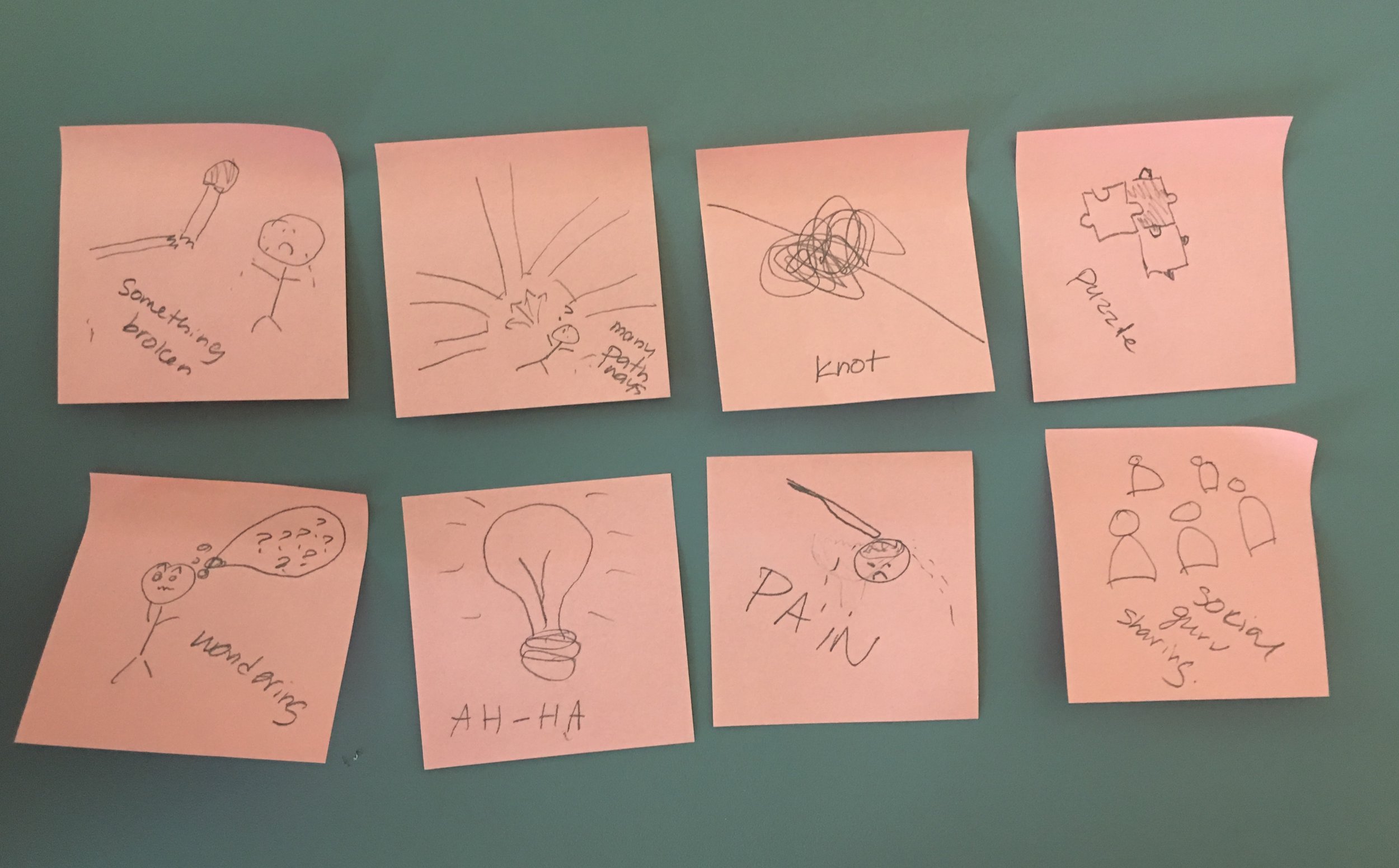Articulating ideas
How do we explain our ideas and communicate meaning? How can we ensure we are understood by everyone?
Articulating our ideas clearly to others is a challenge and often can be ambiguous or misunderstood. Using both words and image can help to clarify meaning and help others to see the connections to their own ideas and opinions.
Visualising thinking is a powerful strategy to use in the classroom, in a meeting, workshop or presentation. Capturing thinking collaboratively on a large whiteboard or paper helps us engage with the topic or problem and lets our thinking become visible. Working together allows dialogue to continue alongside the text and visualisations. We can literally see the conversational changes in direction and reflect back on the journey.
We remember when we engage.
The Secret Strengths of Learners. Visualising thinking, Learning 2, Tokyo 2018
Often people state that they cannot draw and this then holds them back from participating in visualising thinking. But it is not about the quality of the drawings - none of us are Leonardo da Vinci and nor do we need to be. The importance is the participation, the action of drawing and writing - being engaged in the thinking physically.
Drawing helps us to remember
Drawing involves elaboration, visual imagery, motor action and pictorial representation, however it is the combination of the physical action combined with thinking that is most powerful in creating “memory cues” and Wammes et al (2016) describe this as the “The Drawing Effect”
Combining thinking with words and gestures eases cognitive load and it is the superiority of images that helps us remember (Tversky, 2019).
One of the most easily accessible ways of combining words and images to capture thinking and articulate ideas is through a mind map (concept map).
How to take visual notes on an iPad, Nicki Hambleton
You can also start with a bunch of post its to get your thinking going, as I often do with workshop participants, to get them thinking and drawing quickly and simply to capture ideas with minimum stress!
How might you use mind maps and visual thinking to articulate your thinking?




